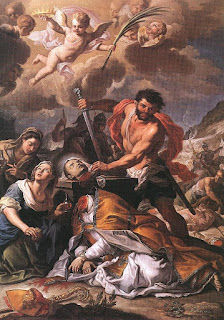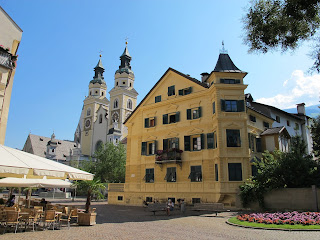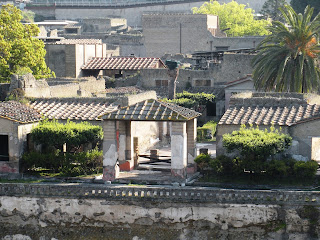First artist to paint a realistic moon
 |
| Cigoli's fresco at the Church of Santa Maria Maggiore shows the Madonna standing on a pock-marked crescent moon |
He became a close friend of Galileo Galilei, who is said to have regarded him as the greatest painter of his time. They wrote to each other regularly and Galileo practised his drawing while Cigoli enjoyed making astronomical observances.
Cigoli painted a fresco in the dome of the Church of Santa Maria Maggiore in Rome depicting the Madonna standing upon a pock-marked lunar orb, exactly as it had been seen by Galileo through his telescope.
This is the first example still in existence of Galileo’s discovery about the surface of the moon being portrayed in art. The moon is shown just as Galileo had drawn it in his astronomical treatise, Sidereus Nuncius, which published the results of Galileo’s early observations of the imperfect and mountainous moon.
Until Cigoli’s fresco, the moon in pictures of the Virgin had always been represented by artists as spherical and smooth.
 |
| Cigoli's Martyrdom of St Stephen is in the Uffizi Gallery in Florence |
He trained as an artist in Florence under the Mannerist painter Alessandro Allori. But he later discarded Mannerist principles and painted to express his own feelings and ideas.
Cigoli also worked with the architect Bernardo Buontalenti in Florence and the imposing inner courtyard of the Palazzo Nonfinito in the city is believed to have been designed by Cigoli.
He painted a version of Ecce Homo for a Roman patron, which was subsequently taken by Napoleon to the Louvre in Paris. It was later restored to Florence and can now be seen in Palazzo Pitti.
Also for the Pitti Palace, Cigoli painted a Venus and Satyr and a Sacrifice of Isaac.
He became so famous and admired that when he travelled to Rome he was personally welcomed and greeted by the Florentine ambassador to the city.
For St Peter’s in Rome, Cigoli painted St Peter Healing the Lame. For the Church of San Paolo fuori le mura, he painted an unfinished Burial of St Paul. In a fresco for the Villa Borghese he painted a Story of Psyche.
Among other important Cigoli paintings are his Martyrdom of St Stephen and Stigmata of St Francis, which are both now in the Uffizi Gallery in Florence.
Just before Cigoli’s death in Rome in June 1613 he was made a Knight of Malta by Pope Paul V.
 |
| The statue of Lodovico Cardi in his home village of Cigoli in Tuscany |
Villa di Castelvecchio di Cigoli, the artist’s birthplace, is now referred to simply as Cigoli and is a hamlet - frazione - of the town of San Miniato in the province of Pisa in Tuscany. The Bishop’s Sanctuary in San Miniato has a Baroque façade designed by Cigoli. There is a statue of Lodovico Cardi outside the Santaurio della Madonna Madre dei Bambini. San Miniato is also famous for white truffles and during the last three weeks of November hosts a festival dedicated to the white truffle, which is harvested in the surrounding area and is more highly valued than the black truffles found in other regions of Italy.
Travel tip:
After Cigoli’s death in Rome in 1613, his remains were transferred to Florence and buried in the Church of Santi Michele Arcangelo and Gaetano da Thiene in Via de Tornabuoni. The Church is one of the most important examples of the Baroque style of architecture in the city. Cigoli’s family tomb is between the second and third chapel on the left.
(Photos of Martyrdom of St Peter and statue by Sailko CC BY 3.0)
Home






















